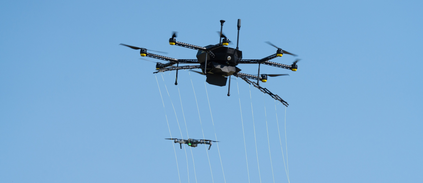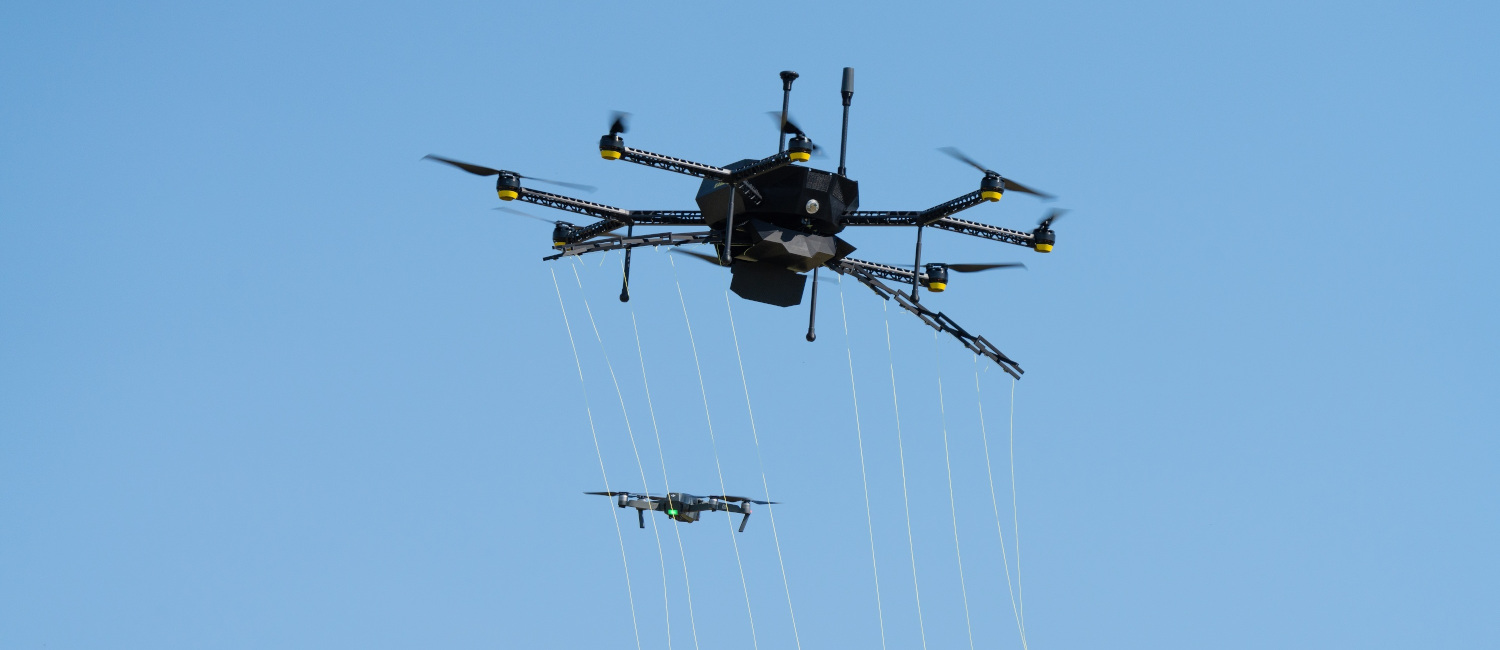A new robust and accurate approach for the detection and localization of flying objects with the purpose of highly dynamic aerial interception and agile multi-robot interaction is presented in this paper. The approach is proposed for use onboard an autonomous aerial vehicle equipped with a 3D LiDAR sensor providing input data for the algorithm. It relies on a novel 3D occupancy voxel mapping method for the target detection and a cluster-based multiple hypothesis tracker to compensate uncertainty of the sensory data. When compared to state-of-the-art methods of onboard detection of other flying objects, the presented approach provides superior localization accuracy and robustness to different environments and appearance changes of the target, as well as a greater detection range. Furthermore, in combination with the proposed multi-target tracker, sporadic false positives are suppressed, state estimation of the target is provided and the detection latency is negligible. This makes the detector suitable for tasks of agile multi-robot interaction, such as autonomous aerial interception or formation control where precise, robust, and fast relative localization of other robots is crucial. We demonstrate the practical usability and performance of the system in simulated and real-world experiments.
翻译:为高度动态的空中拦截和灵活的多机器人互动,本文件介绍了探测和定位飞行物体的新的稳健和准确方法,目的是进行高度动态的空中拦截和敏捷的多机器人互动。该方法提议在配备3D LiDAR传感器的自动飞行器上使用,该传感器为算法提供输入数据;该方法依靠一种用于目标探测的新颖的3D占用 voxel 绘图法和一个基于集群的多假设追踪器,以补偿传感器数据的不确定性。与机上探测其他飞行物体的最新方法相比,该方法为不同环境和目标的外观变化提供了较高的本地化准确性和稳健性,以及更大的探测范围。此外,与拟议的多目标追踪器相结合,对零星的假阳性进行了抑制,提供了对目标的状态估计,探测的耐久不测时间。这使得探测器适合于机动多机器人互动的任务,例如其他机器人在精确、稳健和快速相对本地化的情况下进行自动空中拦截或编程控制。我们展示了模拟和实际实验系统的实际可用性和性。</s>






